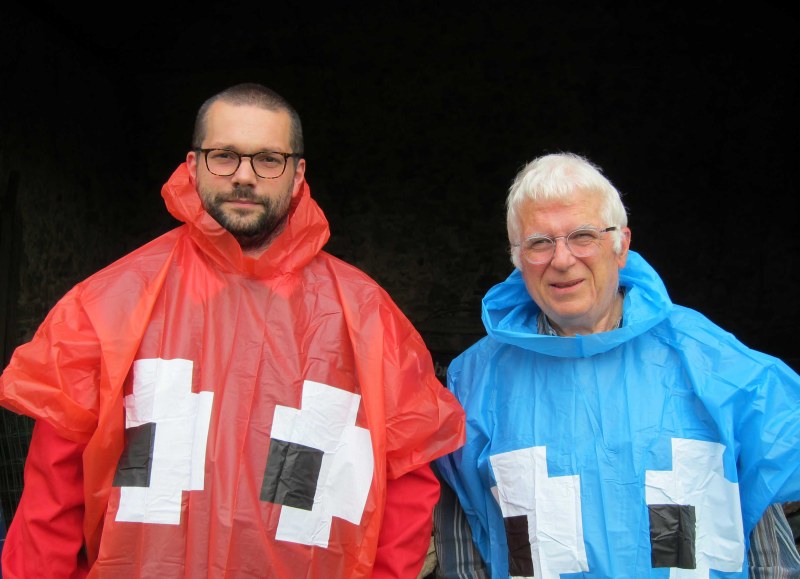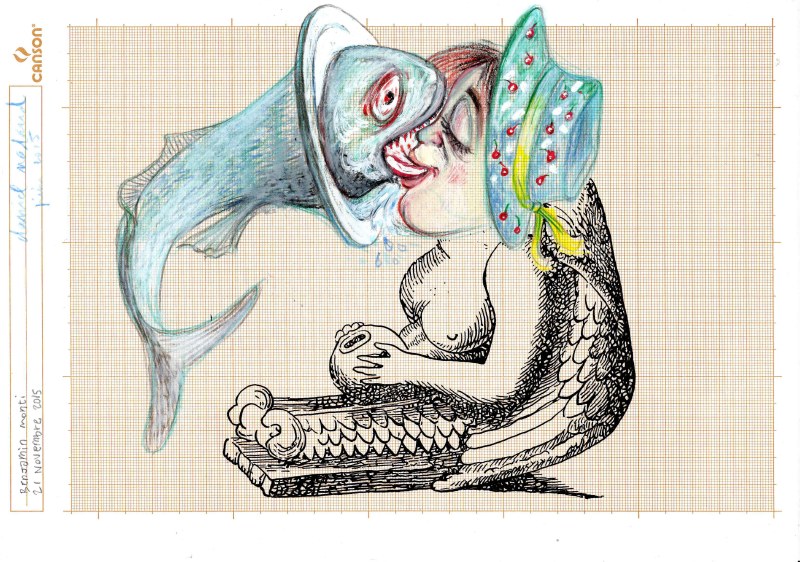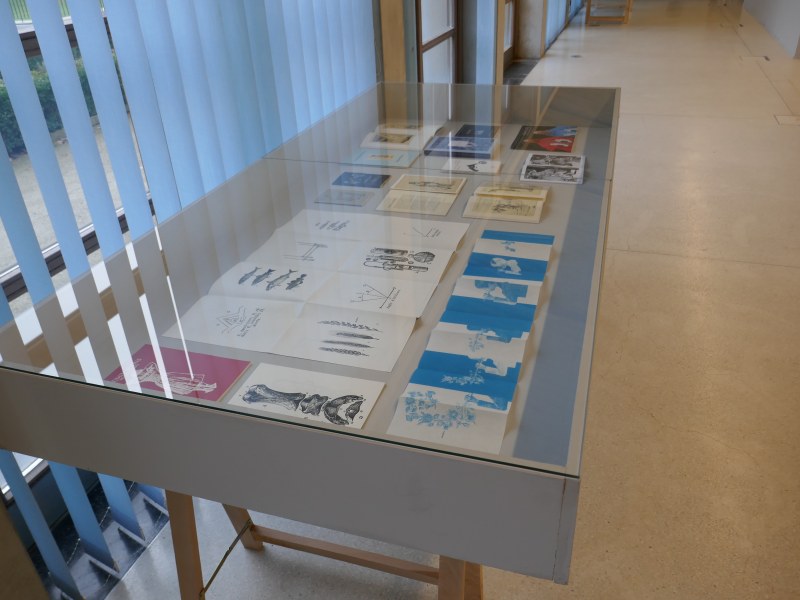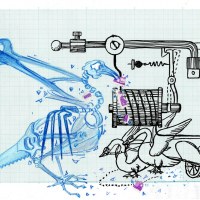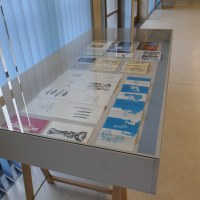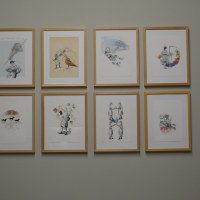With four hands, Benjamin Monti and daniel Nadaud
The 2019 season Paintings and Drawings at the Orangerie ends with a collaboration of artists Daniel Naudaud and Benjamin Monti. It was built in an epistolary correspondence with the sending of drawing of one or the other in a casual manner, without urgency, without pressure to achieve a "result". Uncomplicated interventions have multiplied in the last few years, since they met in 2013 in a group exhibition in Nantes.
These interventions and reinterpretations are grouped in the exhibition of two large walls placed in the center of the main hall. Two showcases each present the world of the two artists separately. They give an overview of their work and offer some reading keys for four-handed interventions.
The creations of Daniel Naudaud and Benjamin Monti start with a principle similar to the exquisite corpse or even interventions or answers that would be more a matter of the association of ideas and a formal response. Being exposed next to each other at the Nantes exhibition, the dialogue between them was quickly made. The wall that separated them served as a link and exchange, where they each exhibited on the other side. The universes being very similar, the collaboration around these exchanges was very natural.
These drawings sometimes revolve around current events, as a poetic allusion rather than as a literal and direct commentary. The first set of drawings was made on millimeter paper, which is dear to both of them, a medium that involves a rule, a measure. Could it be to contain or frame their quirky imagination that still ends up overflowing?
Besides this, there is an interest both for Monti and for Naudaud, around literature - Countess of Ségur, André Dhôtel - but also scientific works or engravings with for example Horace Castelli. This generates appropriations, mostly tinged with humour; diversions or hybridizations for the first and reinterpretation for the latter. Naudaud sometimes dwells on the disappearance of wildlife, the first war and Monti on the cycle of life. Some images are clearly violent, with the illustration of a trepanation, or allusions made to the devil embodied by a fly.
Humor often raises deeper or painful questions related to storytelling and childhood. This childhood is evoked not with nostalgia and idealization but as "often bullied", painful. The heavy feeling over this period of life is sketched with great lightness and is reappropriated, through drawings from learning books, gymnastics of the early twentieth century, catechism, even the illustrated Bible. They say they stayed in that childhood, or remained children, in wonder, with a taste for the game. "We look at things like kids." There is also an allusion to fatherhood
Of course, the works presented are varied as much in terms of themes, allusions, as games of forms, support, it would have been relevant to exhibit personal works that respond to these drawings and that allow to make dialogue their personal practice to practice with four hands. This could, moreover, lighten the exposure, which of course shows a problem of rhythm in the hook. The result would be a greater variety, both in terms of shapes and formats and media. These collaborations densify the exhibition and require greater attention or concentration from the public.
The two artists put their grain of salt in the drawing of the other, with their own paw, their own stroke of pencil. These contributions highlight the contrast between Naudaud's attention to detail and Monti's more raw and direct work.
Post stamps pasted here and there in the works bring new sources of image and imagination and reflect their rich epistolary collaboration
Hélène Jacques
